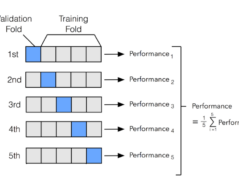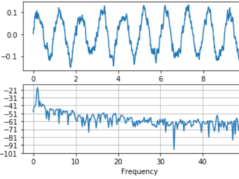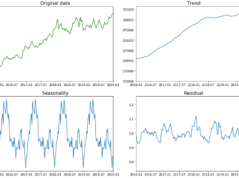Why Momentum Investing Works So Well for Beginners
Momentum investing is a strategy that involves buying stocks that are rising in price and selling them when they reach their peak. Many momentum investors use technical analysis to identify stocks starting to rise and buy them.
There are a few different momentum strategies that you can use, but the most important thing is to have a plan and stick to it. One popular strategy is to buy stocks that have been rising for at least two weeks and then sell them when they start to fall. Another strategy is to buy stocks showing strong price momentum and hold onto them for a longer period.
Whatever strategy you choose, it's important to remember that momentum investing is all about timing. You need to be able to identify when a stock is starting to rise and then act quickly. If you wait too long, you may miss the opportunity to make a profit.
This strategy works best for investors with little or no stock experience.
If you're new to investing, momentum investing might not seem like a good idea. After all, why would you invest in something that's going to fall in value? However, momentum investing is actually one of the safest ways to start investing. It's also a great way to diversify your portfolio.
Father Of Momentum Strategy
The Father of Momentum Strategy is a man by the name of Richard Driehaus. He is credited with creating and popularizing the strategy. The strategy is based on the belief that stocks that are rising in price are more likely to continue rising than those that are falling. This simple yet effective strategy has made Driehaus a very successful investor and a businessman.
Performance of Momentum Strategy
The momentum strategy can be a successful way to make money in the stock market, but it is not without risk. Because stocks that are experiencing strong momentum can continue to go up for a long time, investors may be tempted to hold on to them for too long and miss out on profits. On the other hand, if the stock's momentum reverses suddenly, investors can lose a lot of money.
Overall, the momentum strategy's performance depends on the investor's skill and the current market conditions. When used correctly, it can be a powerful tool for making money in the stock market.
Momentum Effect
There are many different ways to measure momentum, but one common method is to look at the stock's price over a certain period of time, such as the past 12 months.
If the stock's price has gone up over that time period, it has positive momentum. If the stock's price has gone down over that time period, it has negative momentum. If the stock has gone up or down significantly during that time, it is considered to have strong momentum.
India's Momentum Index
The Nifty200 Momentum 30 Index is designed to measure the performance of 30 high momentum stocks across large and mid-cap stocks. The Momentum Score for each stock is calculated using recent 6-month and 12-month price returns, adjusted for volatility. A popular ETF which tracks this momentum index is the UTI Nifty200 Momentum 30 Index Fund which is a passive ETF. Apart from this, there are many popular ETFs available.
The skill of a Fund Manager
Momentum investing essentially doesn't involve any skills of the fund manager as it is a mathematical formula; hence, a 12th grader would be able to pick the momentum stocks effectively. NSE has openly disclosed the methodology, and they basically look for stocks which have given the highest risk-adjusted return based on 6 and 12-month returns
The trend is your friend in Momentum Trading.
In order to be a successful momentum trader, you must first understand what market momentum is. Momentum is simply the rate at which a stock's price is moving. It can be measured by calculating the percentage change in a security's price over a given period of time. Analysts and Momentum traders attempt to exploit the trend in stock prices by buying low and selling high. Some call it the momentum trading strategy.
One of the simplest ways to trade with market momentum is the buy low sell high approach.
The key to momentum trading is catching stocks while they are in an uptrend and getting out before they enter into a downtrend. Many momentum traders use technical analysis tools such as moving averages, Bollinger bands, and Relative Strength Index (RSI) to help them identify trend reversals.
Watch the Risk
It's a well-known fact that buying high and selling high is the key to investing success. However, many investors forget that this also means taking on risks. When the market is trending upward, the upward price can be tempting to buy even more shares in the hope of seeing an even higher return. But what happens when the market takes a turn for the worse? Suddenly, those shares you bought at a higher price are worth much less - and you may even find yourself a loser in the market.
It's important to remember that market trends can reverse quickly and that no investment is ever 100% safe. Diversification is key, so don't put all your eggs in one basket. Instead, rely heavily on diversification and stock allocation to control the risk
Momentum Investing through Smallcases
As of July 8 2022, There are many popular smallcases available for momentum investing. But, the popular ones have fared really bad in the last 6 months. There is a huge risk with smallcase momentum portfolios. In a downward trend market, the fund managers are unable to control the portfolio volatility.
One popular one is the NIFTY Next 50 Rotational Momentum by Weekend Investing. This portfolio had managed to beat the Largecap benchmark by 3%. But, this is an expensive portfolio which costs 2499/3 months
Another popular one is the Momentum by Wright Research. This portfolio had managed to beat the Largecap benchmark by a mere 1%. This doesn't make any sense and we suggest that UTI Nifty200 Momentum 30 Index Fund which is a passive investing ETF to be a better alternative
The third most popular one is the Captial Mind Momentum. This portfolio couldn't even beat the Largecap index and is underperforming it by 7%. Plus this costs 4500/3 months, which makes it one of the most expensive and underperforming momentum portfolios.
Introducing the Quantace Portfolios
We do not rely on 12th-grade mathematics to create simple momentum factor portfolios. In fact, we believe that Stock Momentum is risky. We use AI and Data Science to create portfolios that consistently outperform the benchmark with less risk. Our portfolios not only beat the benchmark but also the well-established mutual fund companies. We have better alternative investment strategies that have beaten the benchmark indices consistently and offer high returns
Quantace Leaders - Invest in top companies that have performed well in each sector. This has created an alpha of 7% over the benchmark at a mere 900/3 months
Quantace CNX500 Flexicap Aggressive - Invest in Largecap, Midcap and Smallcap stocks, This has created an alpha of 6% over the benchmark at a mere 1500/3 months
Quantace CNX500 Flexicap Conservative - Invest in Largecap, Midcap and Smallcap stocks, This has created an alpha of 5.5% over the benchmark at a mere 1500/3 months






